Reference
Cartier: A Santos Story
Reference
Cartier: A Santos Story
Take, for example, the Santos — Cartier’s very first wristwatch and one of its most enduring. It is, essentially, a square watch with broad flanks and lugs, and an affinity for visible screws. In the hands of another maker, this design would be unequivocally masculine, yet Cartier’s design cleverly integrates a certain softness around the edges — a refinement that is somewhat surprising given that the original brief of this watch was a tool for a pioneering pilot.
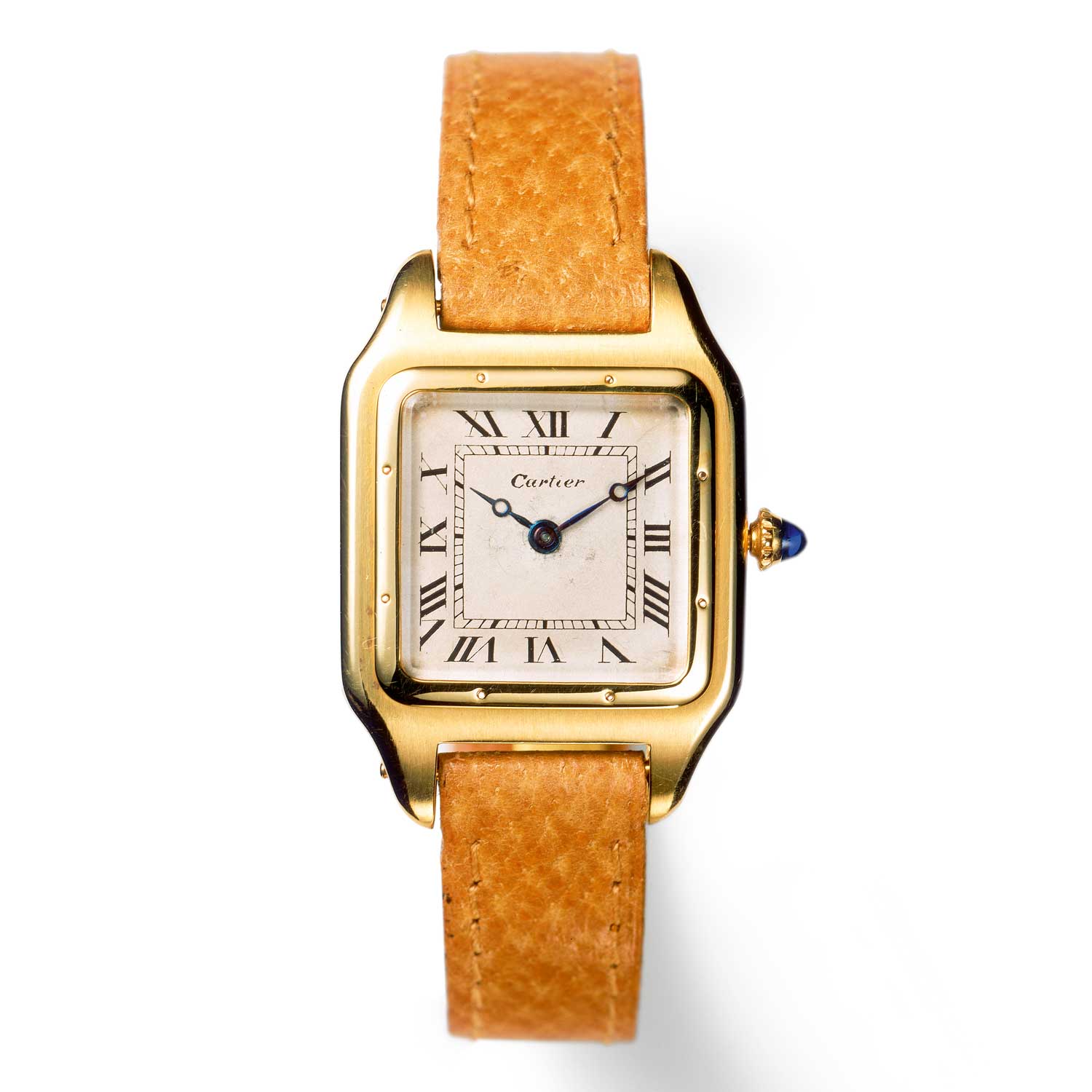
An early yellow gold Santos, the archetypal modern wristwatch
The Man behind the Myth
Alberto Santos-Dumont grew up surrounded by innovation. Born in Brazil in 1873, he was the sixth son of engineer and prominent coffee farmer Henrique Dumont and Francisca de Paula Santos. The early years of Alberto’s life were characterized by his father’s work on railroads, and — even then — he was fascinated by the promise of modern mechanical engines and, above all, flight. When he was 15, he witnessed flight for the first time — a balloonist in São Paulo — and was hooked.
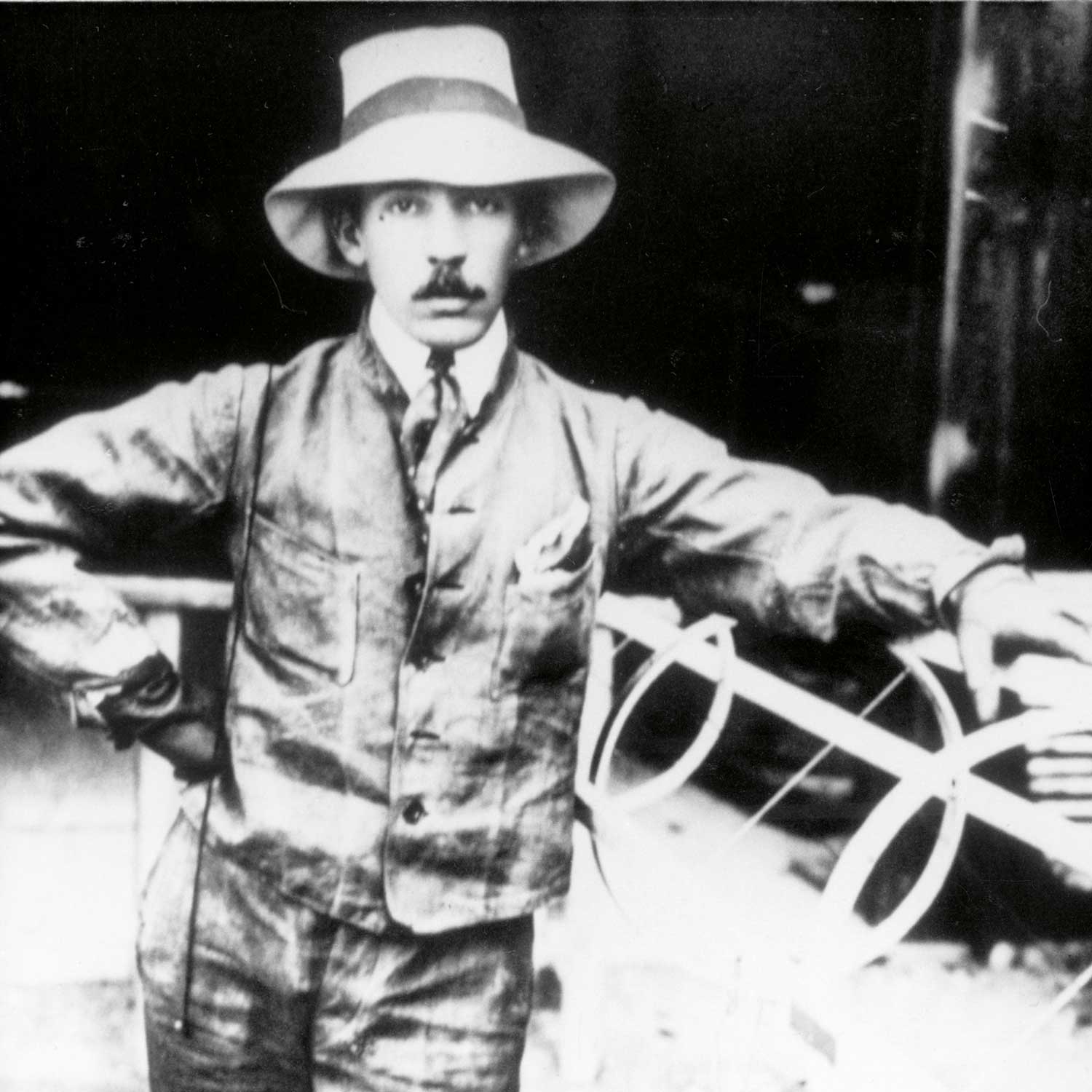
The pioneering aviator, Alberto Santos-Dumont
On October 19, 1901, after many attempts and several ships, Santos-Dumont attempted to win the prestigious Deutsch Prize in his No. 6 airship. This prize required an aeronaut to pilot a machine from Parc de Saint-Cloud to the Eiffel Tower and back — a distance of some 11 kilometers. Moreover, to be eligible for the 100,000 franc purse, the flight had to be done in less than 30 minutes. Santos-Dumont completed the course in 29 minutes and 30 seconds, but took a minute to land. This initially led to the judgment from the Aéro-Club de France that he had not won, but public opinion was so great that the decision was reversed. As for the prize? Santos-Dumont gave it to his staff and the unemployed of Paris. The combination of innovation and high-stakes drama ensured that Santos- Dumont was a superstar and a true pioneer of flight.
Santos-Dumont wasn’t satisfied, though, he continued to push the envelope, especially in the field of heavier- than-air flight. A steady stream of gliders, early helicopters and eventually aeroplanes were developed with Santos- Dumont’s patronage, and in 1906 he made the first publicly witnessed manned powered flight in Europe in the 14-bis.
Monsieurs Cartier and Santos-Dumont
Of course, there was more to Alberto Santos-Dumont than aviation. As an exceptionally wealthy aristocrat, he was one of the Parisian elite. It is unsurprising then that he mingled in the same circles as Louis Cartier, who was as important a pioneer in the realm of timekeeping as Santos- Dumont was in the world of flight. So it came about that in 1904, Louis Cartier presented his friend with a singular timekeeper, a sturdy square, meant to be worn on the wrist rather than in the pocket, likely developed with Edmond Jaeger. Over time, the cultural and stylistic associations of this seminal design have changed significantly — but it’s important to remember that in 1904 this watch was built with pure purpose in mind. For those short flights, time mattered, and Santos-Dumont certainly didn’t want to be fiddling with pocket watches. By putting his watch on the wrist so that it was always accessible, Louis Cartier not only provided Santos-Dumont with a valuable tool, but inadvertently revolutionized how watches were worn.
The Style of the Times
Of course, no matter how utilitarian its intent, there is no denying that Louis Cartier’s creation for his friend is a work of beauty. Paris in the early 20th century was a cultural and artistic hub, and more than ever before, the lines between industrial production and artistic expression were blurred. So it was that Cartier’s creation eschewed the conventional round form of pocket watches, in favor of something bolder, more geometric — a square. The case and the lugs which attached the strap were a single piece, fluid thanks to the curves on the corners, but also strong. The raised bezel made no attempt to hide its screws, a nod perhaps to the spirit of industry and innovation that gave birth to creations like the Eiffel Tower.
Cartier’s original 1904 creation is lost to history, but thankfully, the legacy didn’t end there. In 1908, Louis Cartier returned to this bold new form of timekeeper, making it available for sale in 1911, and the watch was well-received. After all, the world was changing, and style was rejecting the pomp and over-the-top fussiness of the last century’s fashion in favor of clean lines, new shapes and a bold vision of the future. Cartier’s new style of watchmaking — a journey that began with the Santos and that would continue with the Tonneau, Tank and more — was perfectly in line with this new aesthetic, a movement commonly referred to in English as Art Deco.
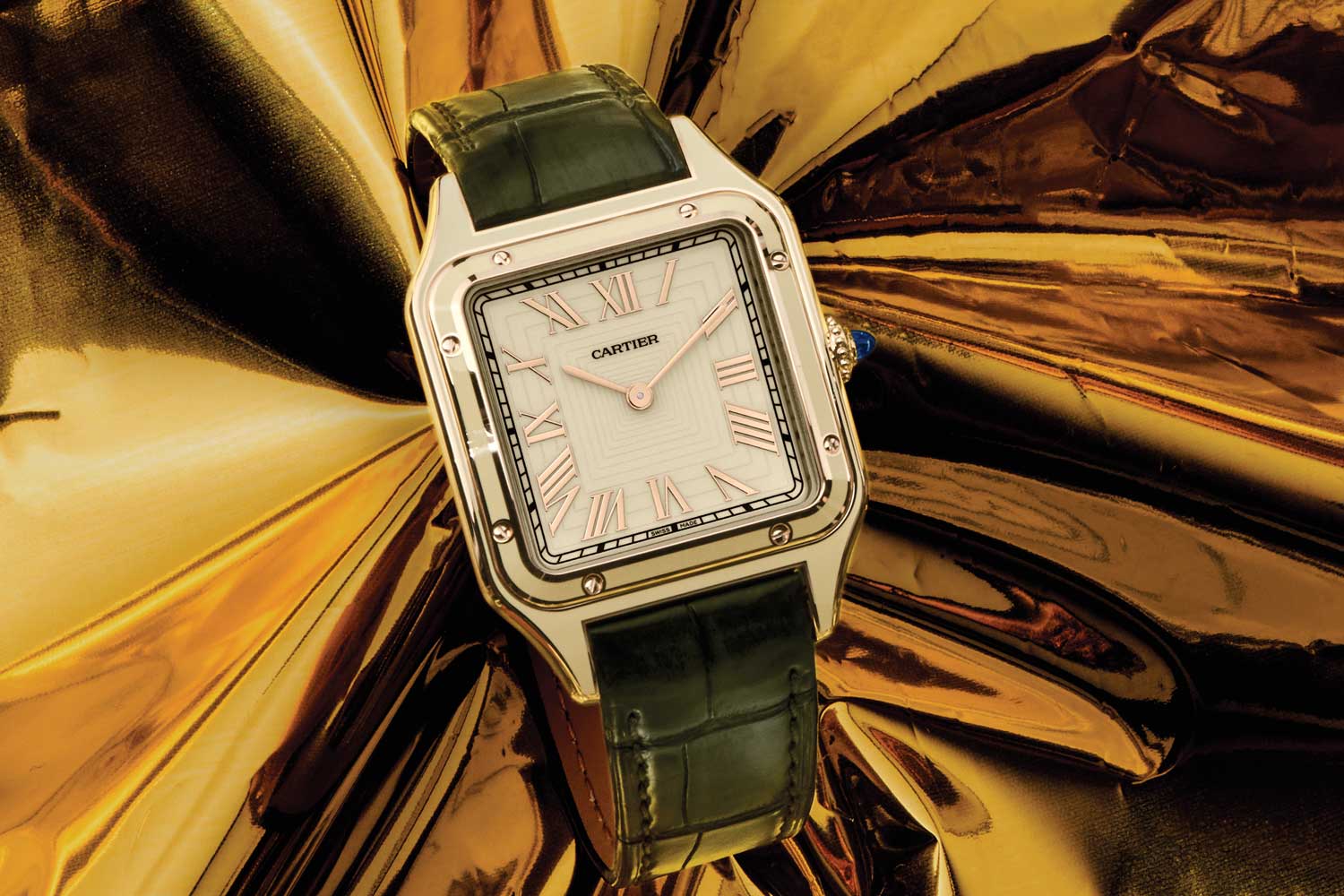
Art Deco inspired grandeur at its finest, the latest limited edition Santos-Dumont
Stylish, All the time
What’s remarkable is that the Santos-Dumont, as it is now known, is as stylish today as it was 100 years ago. The remarkable longevity of this seemingly simple design is something Cartier’s heritage, image and style director, Pierre Rainero, is acutely aware of. “Let’s not forget that the Santos watch is the first modern wristwatch ever and the first watch designed to be worn on the wrist,” Rainero explains. “Behind that model, the values associated are about adversity, and there is also a good comprehension of the evolution of people’s way of life. There is a strong difference in that watch but also an idea of relevance. And I think, for instance, that the fact that we offered very quickly the possibility to wear it differently with a metal bracelet or leather strap shows that adaptation to the way of life.” Originally, the Santos-Dumont was made as a pilot’s tool; today it is one of the definitive dress watches. While the function has changed, the form remains the same.
Of course, the Santos-Dumont has retained its special identity as the spiritual successor of Cartier’s first wristwatch. It began to achieve mythic status in the late ’90s, with the Collection Privée Cartier Paris (CPCP), which saw the production of a highly coveted platinum edition with a salmon dial. This really started to encapsulate the possibility of the Santos-Dumont. According to renowned Cartier expert George Cramer, “The Santos-Dumont has, for a long time, been one of the most exclusive models, along with the Tank Cintrée and the Tonneau — they were always harder to find.” Until now.
This brings us to the contemporary version of the Santos-Dumont, which rejoined the core collection in 2019 to critical acclaim. These core releases come in a range of styles and sizes — all of them elegant. Having said that, it is hard to compete with a trilogy of watches released earlier in 2022. Offered in three versions, this large cased take on the Santos is perfectly sized for masculine wrists, and is powered by the ultra thin caliber 430 MC. What truly makes this limited edition offering stand out, though, was the sophistication and subtlety of the design. Not only was the soft, warm cream-toned dial marked with a barely perceptible radial geometric pattern, but Cartier’s typical highly contrasting numerals and hands were eschewed in favor of tonally matching gold hardware.
The other remarkable aspect of this watch is how restrained the typically lustrous rose gold is — it appears warmer, and somehow softer. This ingenious party trick is thanks to the creamy, beige-colored lacquer on the lugs and bezel, applied into recesses and then polished back. Not only does this create a seductively smooth surface, but it allows the edges of the case and bezel, as well as the bezel screws, to shine bright. This treatment is a masterclass in the sophisticated use of color and highlights the sophisticated shape of the Santos-Dumont in a manner that is novel in the truest sense of the word. George Cramer describes this lacquered approach as a “fusion between traditional watchmaking and Métiers d’Art.” Truly something remarkable for what is essentially a century-old design.
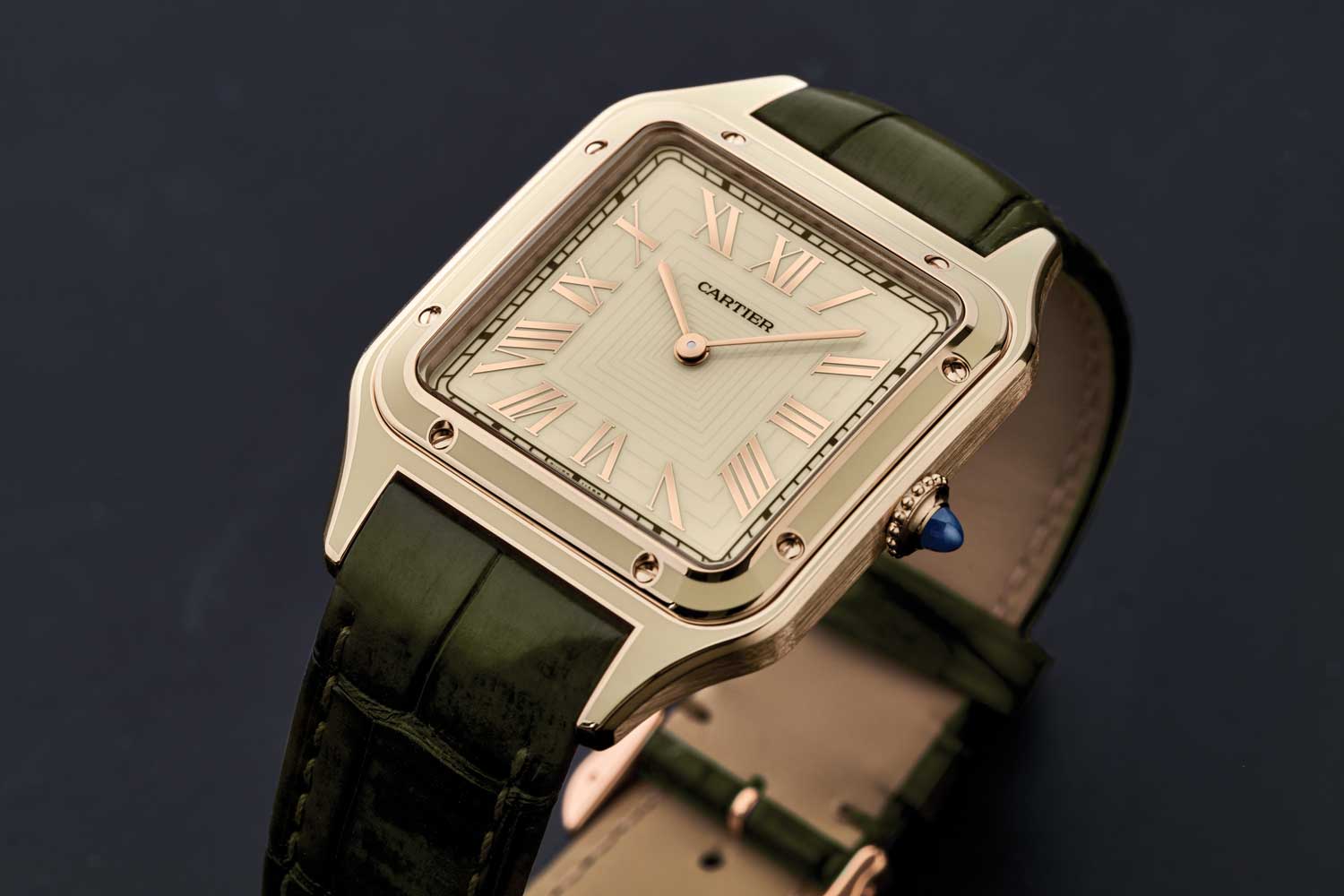
Note the subltle play of lacquer and light on the edges of this gold case
A Tale of Two Santos
The traditionally styled Santos-Dumont is not the only watch to bear that name, for another Santos was made. Santos de Cartier bears the same essential silhouette, but has an entirely separate personality.
Pierre Rainero describes this duality: “Effectively, in the original Santos watch, there is a twofold identity. In a way, Santos-Dumont adopted the creation of Cartier because it was very convenient, but also, he wanted an object that should be elegant. We have the two sides, the side of how convenient it is to wear it on a day-to-day basis, even in exceptional circumstances, but also an object that shows the elegance of the wearer and the beauty of your object. They are two different ways of wearing it: the Santos-Dumont is a very thin watch with leather straps only, whilst the Santos [de Cartier] is bolder.”
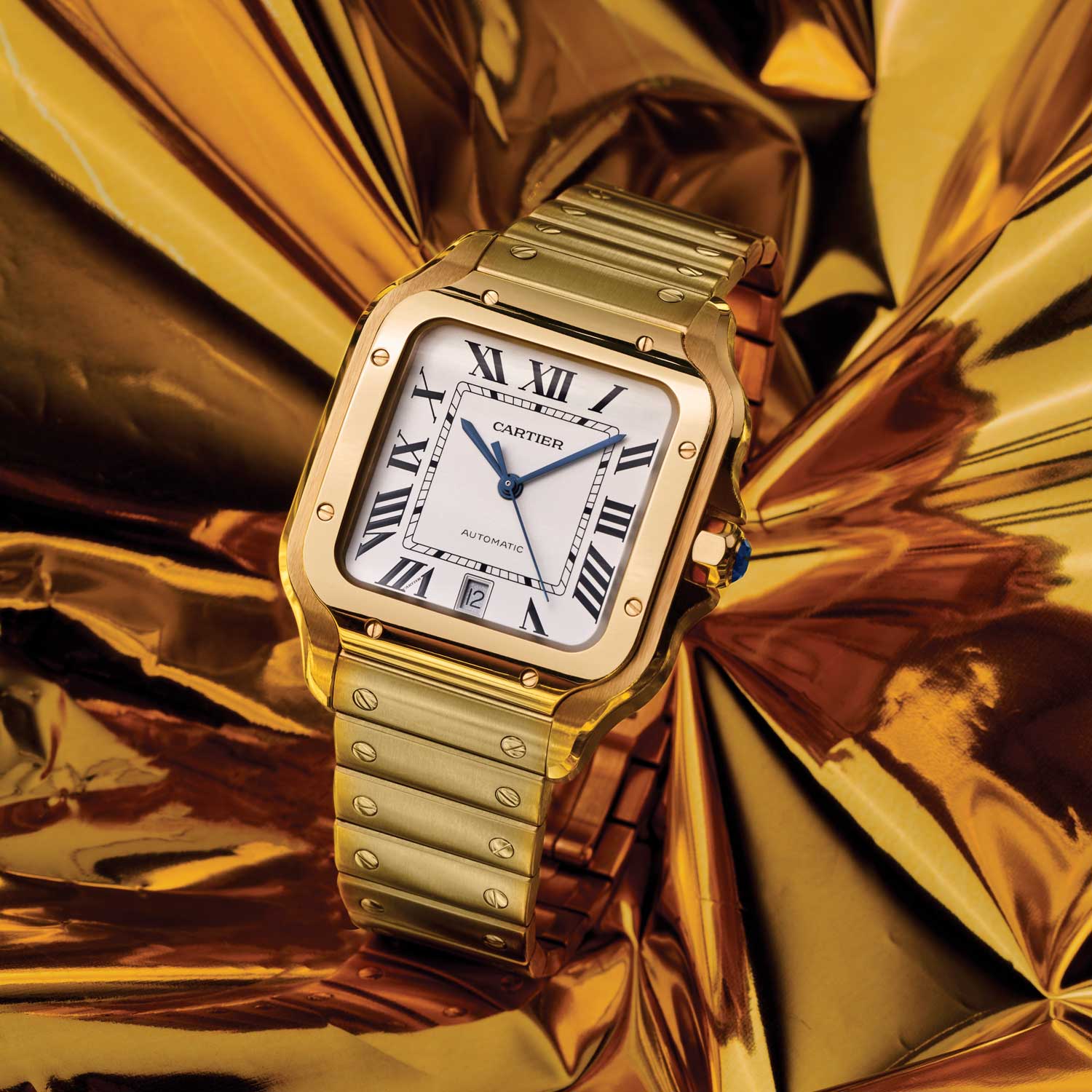
It’s hard to beat a solid gold Santos for impact
The Bold and The Bracelet
In 1978, Cartier reimagined the Santos — creating a wildly popular design that is now known as the Santos de Cartier. It emerged from an era of great change — both in society and culture, and within the company of Cartier. The dominant trend in watches during the ’70s was, in Switzerland at least, guided by fear. Quartz technology was rapidly moving from the realm of technical possibility and into the domain of crippling commercial reality for mechanical watchmakers. For many brands — even established ones like Cartier — it was adapt or die, and Cartier, under the leadership of Robert Hocq and Alain- Dominique Perrin, opted for the former.
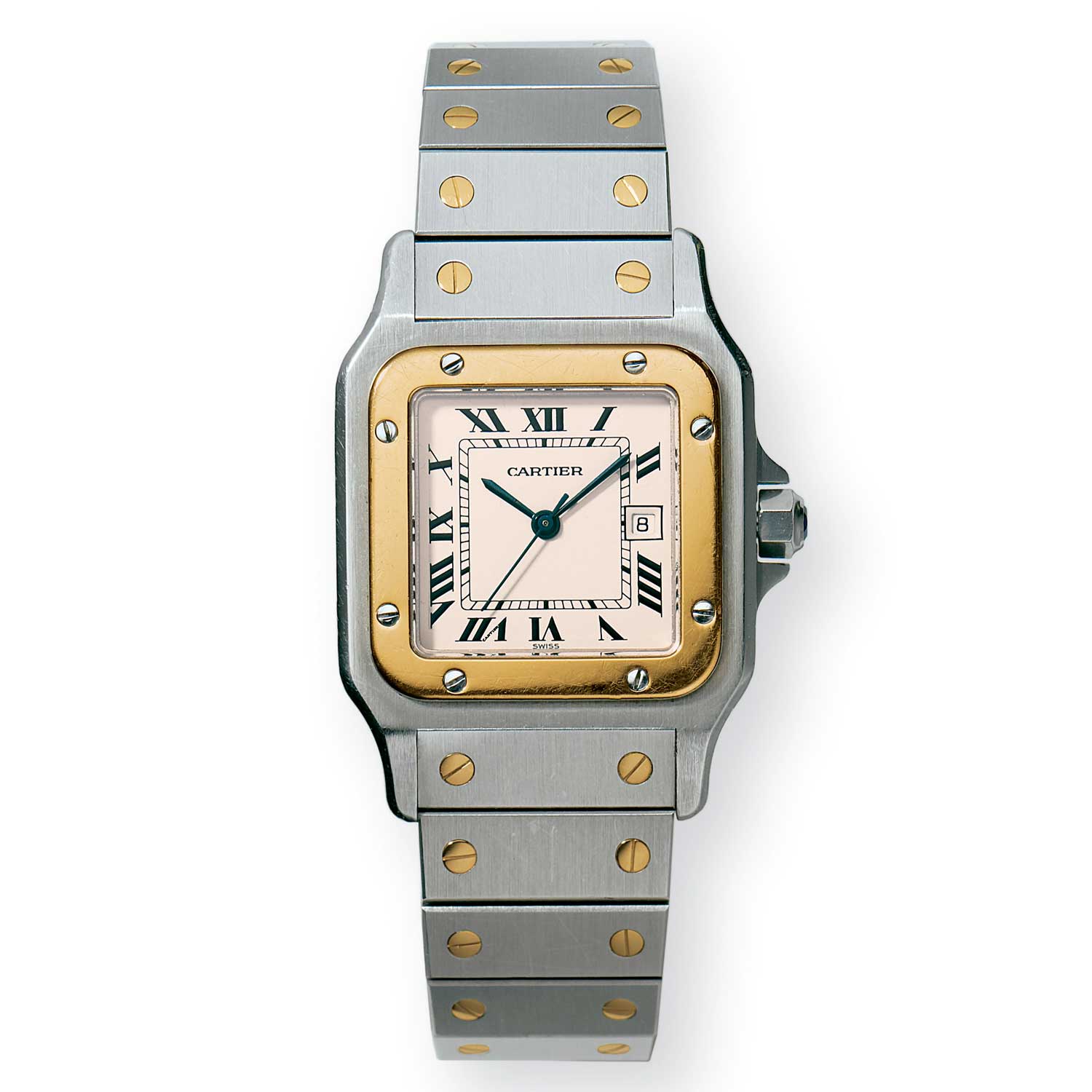
In 1978, Santos de Cartier made a reappearance, now with a sporty new look in gold and steel
As the ’70s turned into the ’80s, this sporty Santos proved to be a hit. New models and versions joined the catalog, and the distinctive two-tone watch became part of the cultural zeitgeist. There was a reason Michael Douglas wore a gold Santos in Wall Street, after all. In 1987, the blocky Santos evolved into the Santos Galbée. Some of the hard lines were smoothed out, and the watch flowed more seamlessly on the wrist. The Santos Galbée evolution set the tone for the look of the model for the next 30 years, and when Cartier revamped the line in 2018, it was unmistakably a descendent of both this sportier model, and the original Santos.
While the shape remained the same, many of the finer details had changed. The new Santos de Cartier was made with the wearer in mind. Not only were on-the- wrist ergonomics improved, but the strap was attached to the case using a QuickSwitch system, a seamless, tool-free innovation that works with both leather straps and bracelets. Speaking of bracelets, this release made changing bracelet links easy, thanks to SmartLink technology. And honestly, while this watch works well on a strap, it was born on a bracelet, which is where it shines, especially in solid gold.
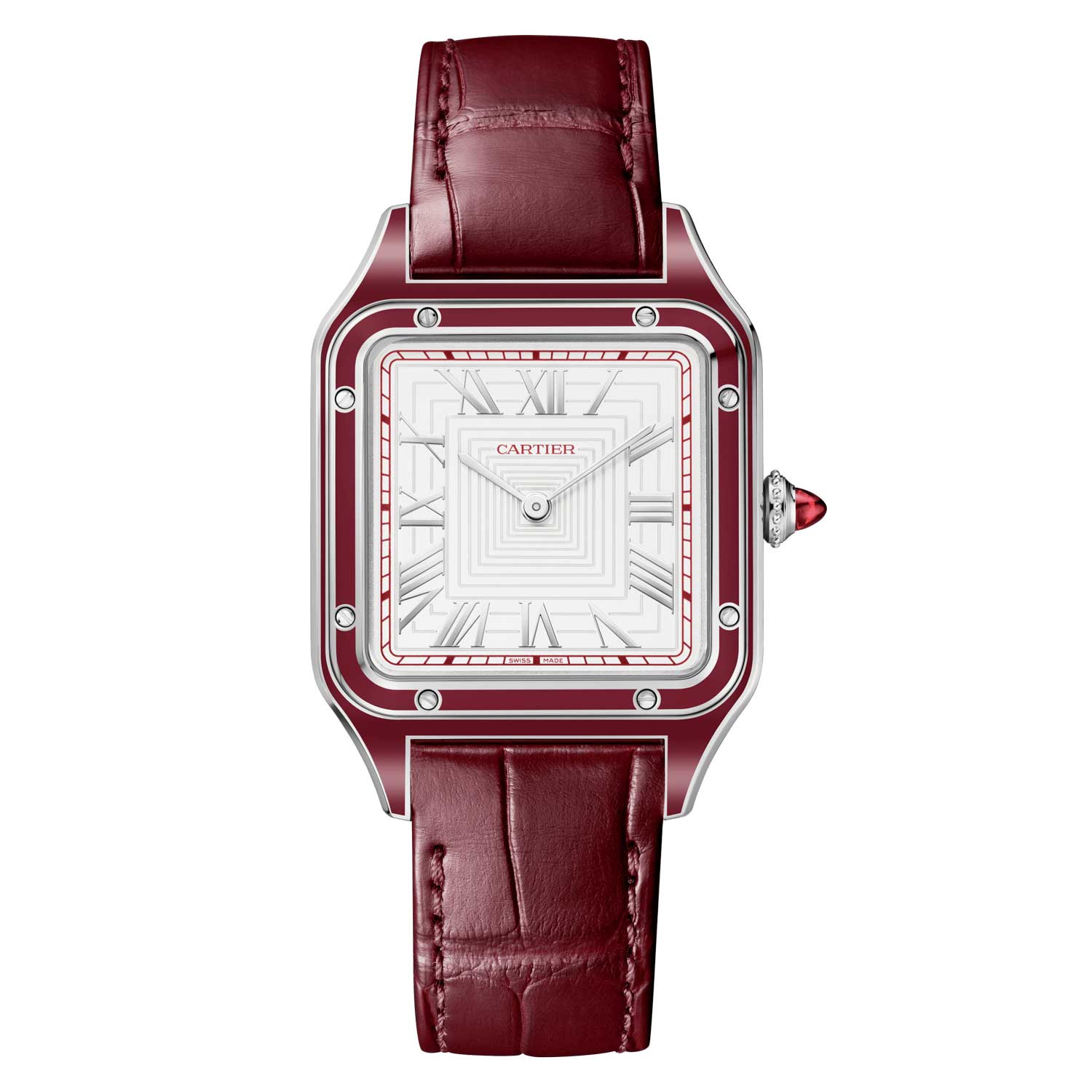
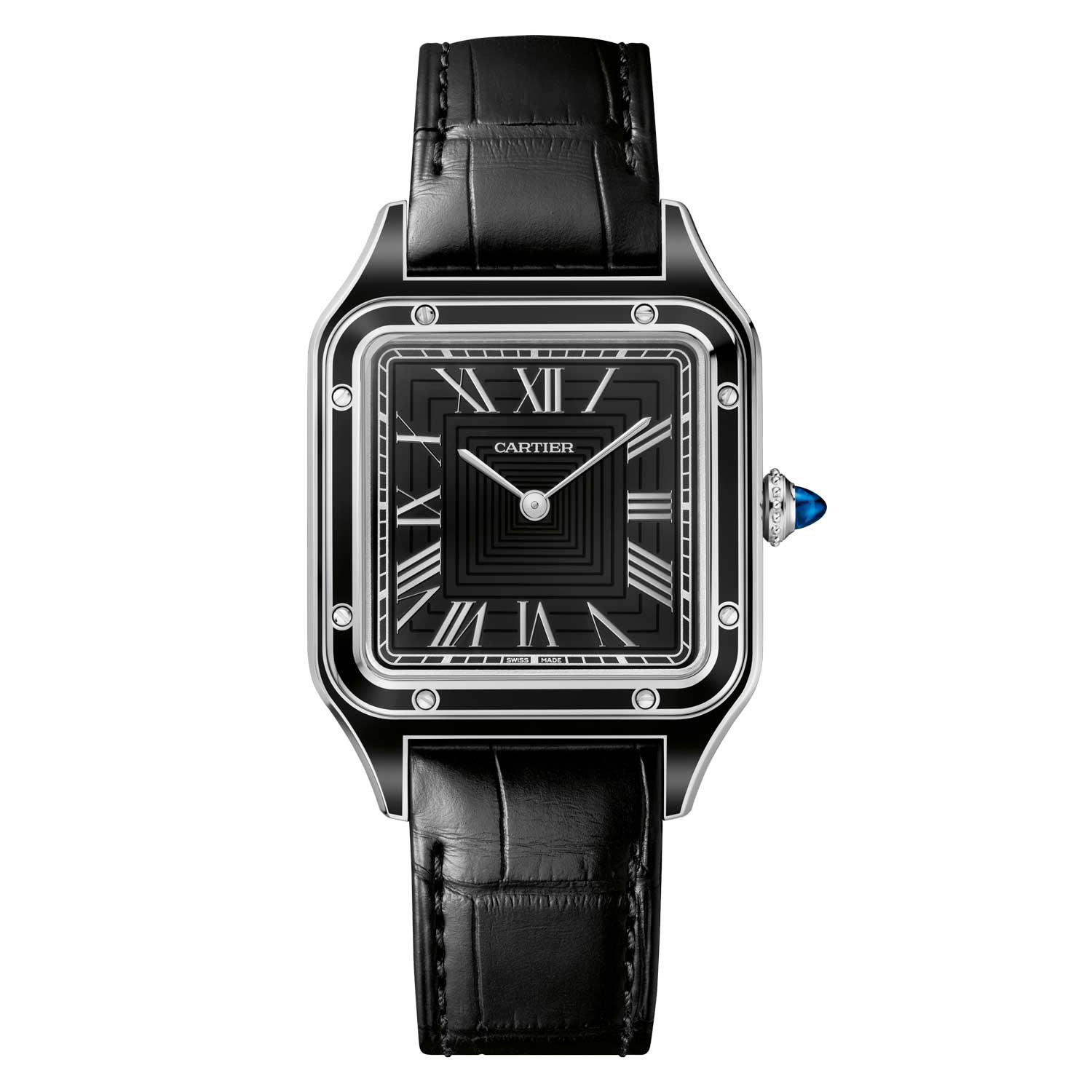
Less is More
While Cartier is most famous for shaped watchmaking, it’s far from the only arrow in their quiver. The maison also has a strong reputation for skeleton watches. Before we dive into the details, it’s worth a quick digression on the difference between skeleton and skeletonized. The latter is the result of taking a standard caliber and paring it back, removing excess metal to reveal the mechanism beneath. A skeleton caliber takes the opposite approach, and has been built from the ground up to showcase the gears, wheels and all the rest. It’s a harder, more intensive approach that generally looks more cohesive. It’s also the approach that Cartier prefers.
In fact, the brand was one of the first to design dedicated skeleton movements. George Cramer explains: “Cartier built their 9611 MC caliber from scratch. Instead of eliminating everything that’s possible from an existing caliber like it was usually done. This way of working gave the watchmakers and designers the possibility to rearrange the various components and to turn the movement plates into numerals. The caliber was introduced in a Santos 100 case, but was rearranged to fit the Santos- Dumont. Later on, the Crash, Tank Asymétrique and the Cloche Skeleton followed. All with movements following the same principle.”
Pierre Rainero further elaborates on what this interesting and technically demanding style of watchmaking means for Cartier: “The skeleton is for us very much into our way of looking at the technical part of an object, meaning that the technique is always at the service of the aesthetics. In that case, the skeleton is a way of showing the beauty of a movement, and in fact, we work on the aesthetics of the movement in order to show it and to integrate it in the shape of a watch in a beautiful way. It’s also the idea of playing with transparency. Let’s not forget that Cartier created the mystery clocks — going to the extremes of transparency to the point that the movement disappears. In the case of a skeleton, the movement doesn’t disappear, but everything that is not totally useful to it is removed, and I think it’s another way of working on the idea of transparency. It’s very much Cartier.”
This year, Cartier added three new Santos de Cartier Skeletons, designs that built on the popular ADLC “Noctambule” design unveiled in 2019. Form-wise, these steel cased designs hew closely to the classic design, with the caliber 9611 MC movement bridges doing double duty as Roman numerals. What really stands out, though, is the use of color. There’s a model with blue dial details, bezel and rubber strap. A more muted option is the steel and gray version, which comes on a bracelet and gray alligator strap. Finally, there’s a stunning green offering, which is — quite simply — gorgeous.

Three takes on a century-old form proves just how versatile the Santos silhouette is
It’s clear, based on the freshness of this trio of skeletons, that Louis Cartier’s design, first laid down over a century ago, is as relevant as ever. Indeed, the Santos is a story for the ages.
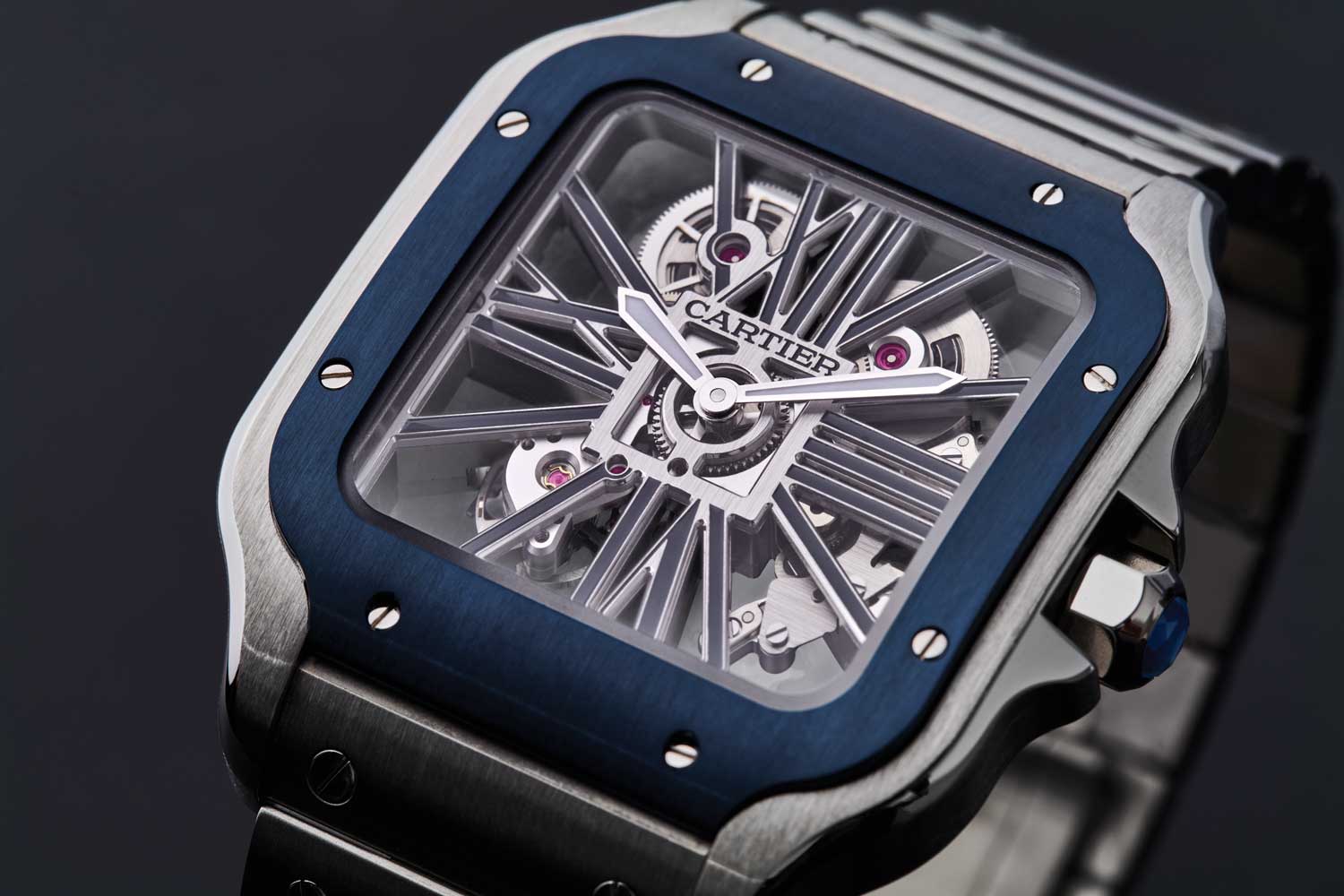
It isn’t just the skeleton caliber, it’s the refined case ergonomics that makes this Santos sing
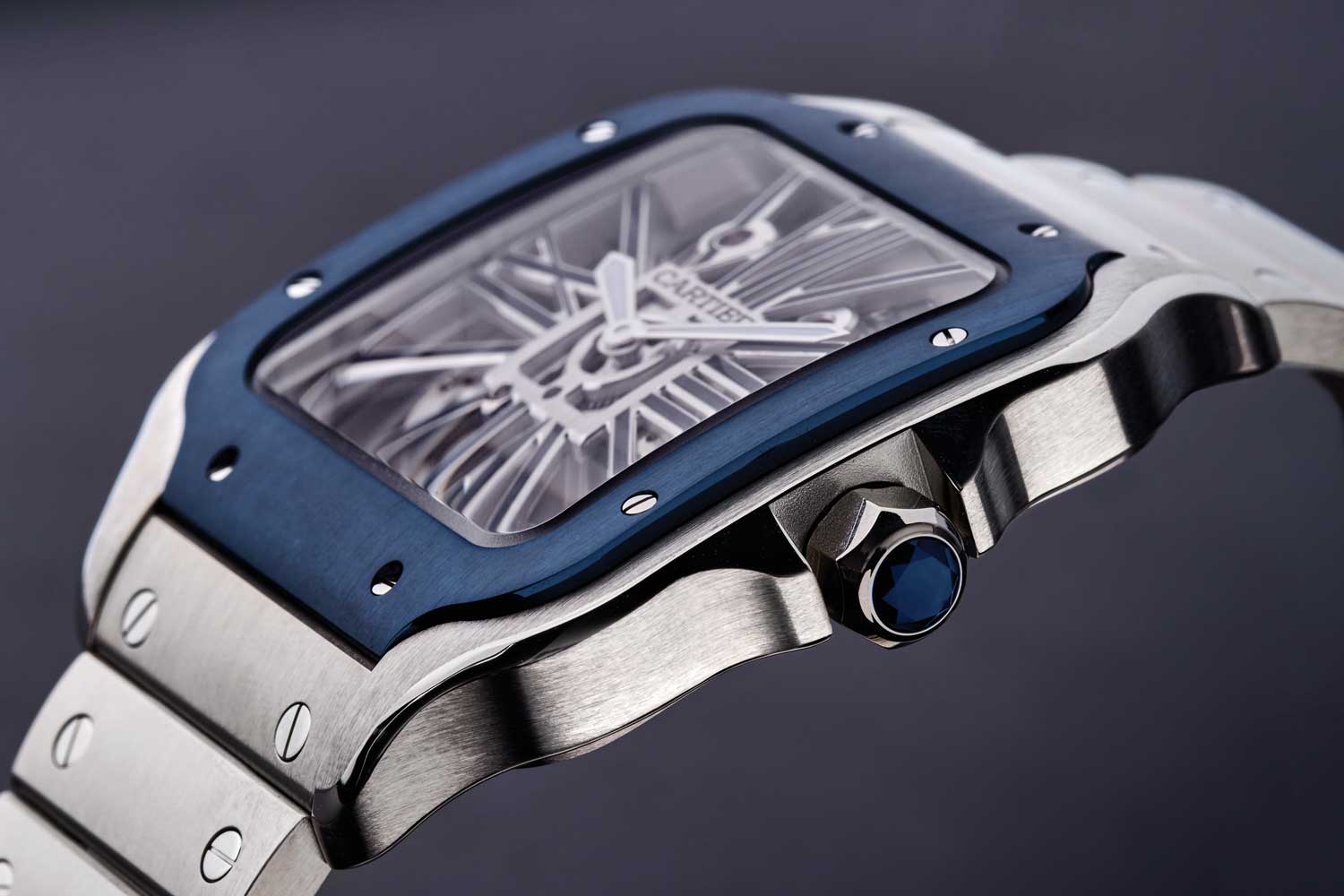
It isn’t just the skeleton caliber, it’s the refined case ergonomics that makes this Santos sing
Tech Specs
Cartier Santos-Dumont With Lacquered Case and Bezel
References: CRWSSA0046 (steel); CRWGSA0053 (platinum); CRWGSA0054 (rose gold)
Movement: Manual winding caliber 430 MC; 38-hour power reserve
Functions: Hours and minutes
Case: 43.5mm × 31.4mm; steel, platinum or 18K rose gold; water resistant to 30m
Dial: Black, white or cream colored, lacquered with concentric square pattern; applied Roman numerals
Strap: Black, burgundy or dark green alligator leather; ardillon buckle in matching metal
Price: AUD 24,700 in rose gold, AUD 8,950 for steel and AUD 28,300 for platinum
Availability: Numbered and limited editions of 150 pieces in platinum and 250 pieces in rose gold
Cartier Santos De Cartier in Yellow Gold
Reference: CRWGSA0029
Movement: Self-winding caliber 1847 MC; 42-hour power reserve
Functions: Hours, minutes, seconds and date
Case: 47.5mm × 39.8mm; 18K yellow gold; water resistant to 100m
Dial: Silvered opaline; black Roman numerals
Strap: Interchangeable yellow gold bracelet with QuickSwitch system; additional brown alligator leather with yellow gold folding clasp
Price: AUD 51,000
Cartier Santos De Cartier Skeleton
References: WHSA0026 (blue), WHSA0027 (gray), WHSA0028 (green)
Movement: Manual winding caliber 9611 MC; 72-hour power reserve
Functions: Hours and minutes
Case: 47.5mm × 39.8mm; stainless steel; water resistant to 100m
Dial: Openworked, blue, green or gray
Strap: Interchangeable steel bracelet with QuickSwitch system; additional blue, green or gray alligator leather with steel folding clasp
Price: AUD 44,600 in blue or green dial; AUD 43,300 in gray dial










